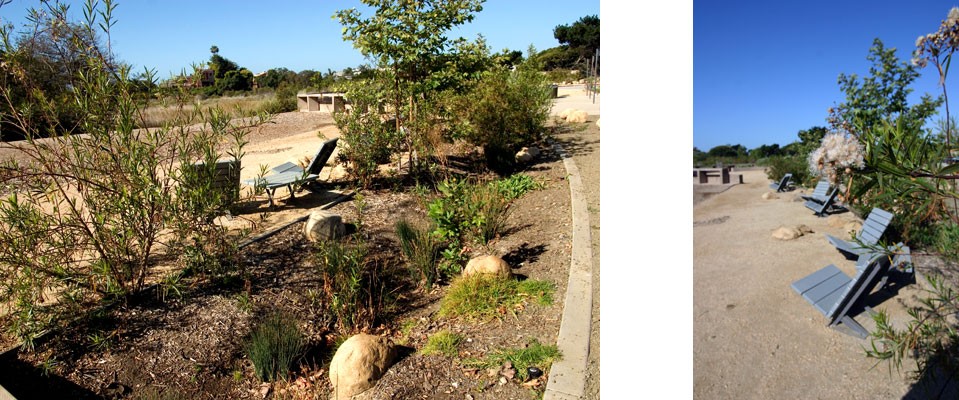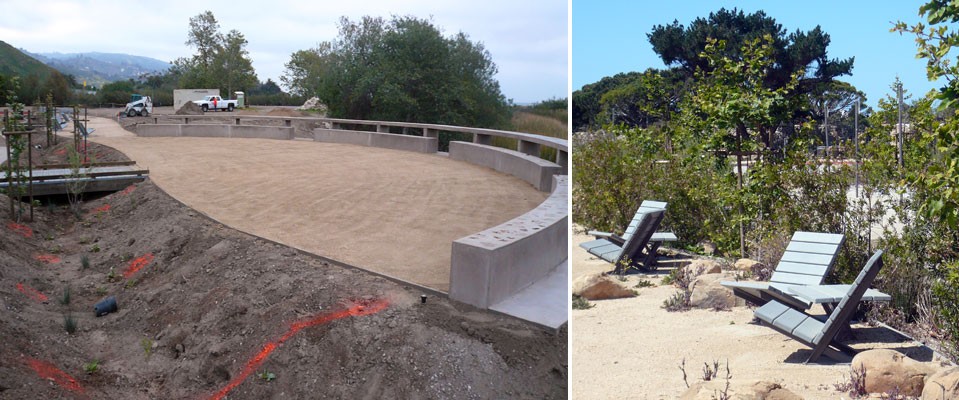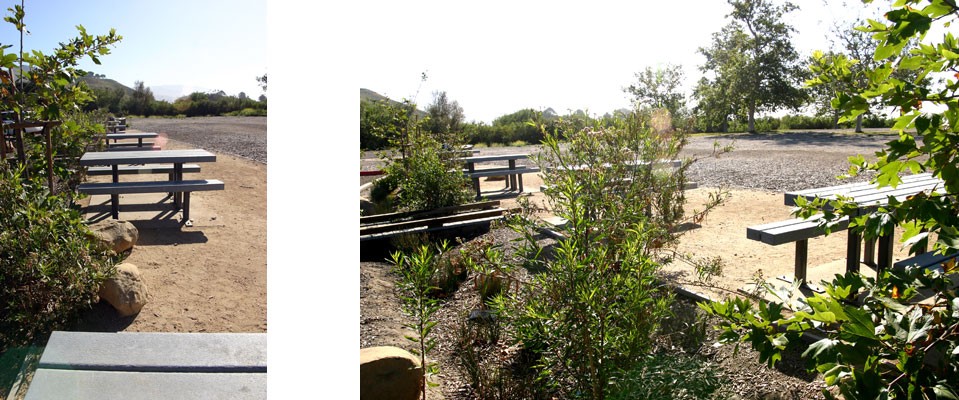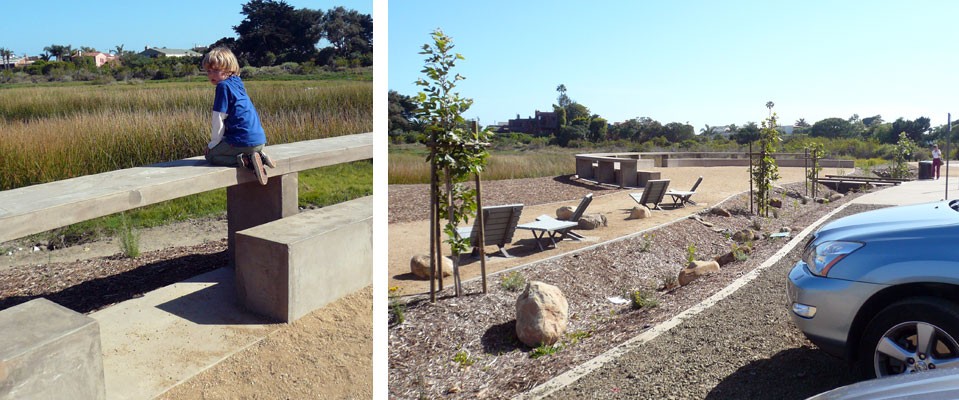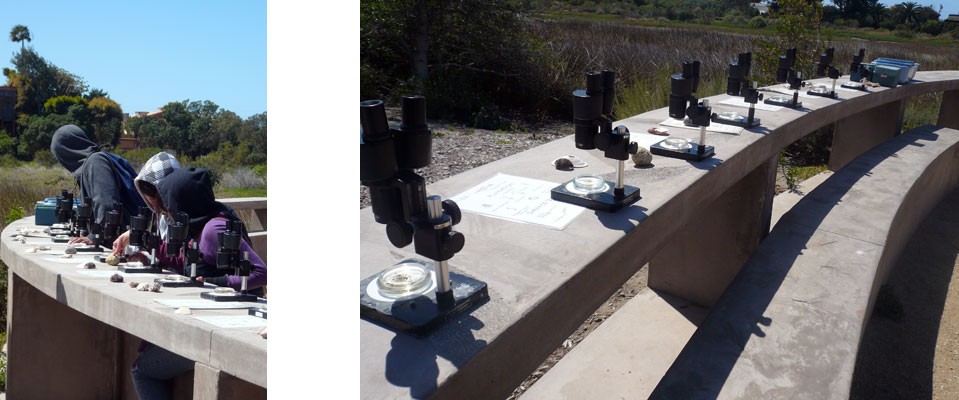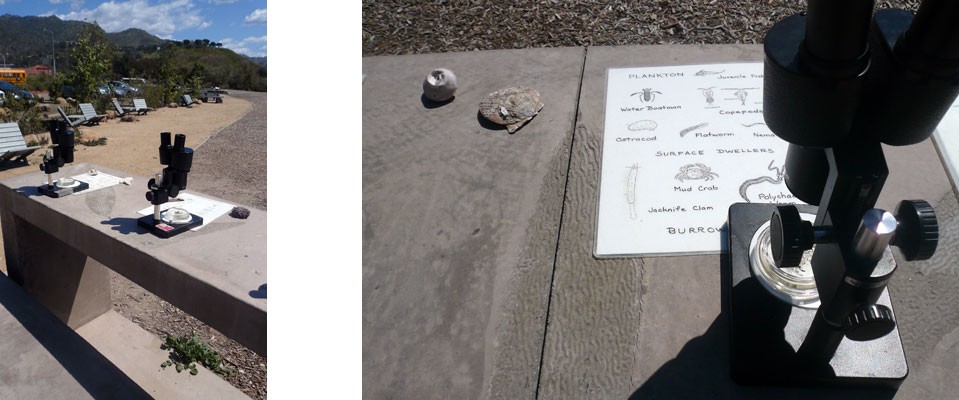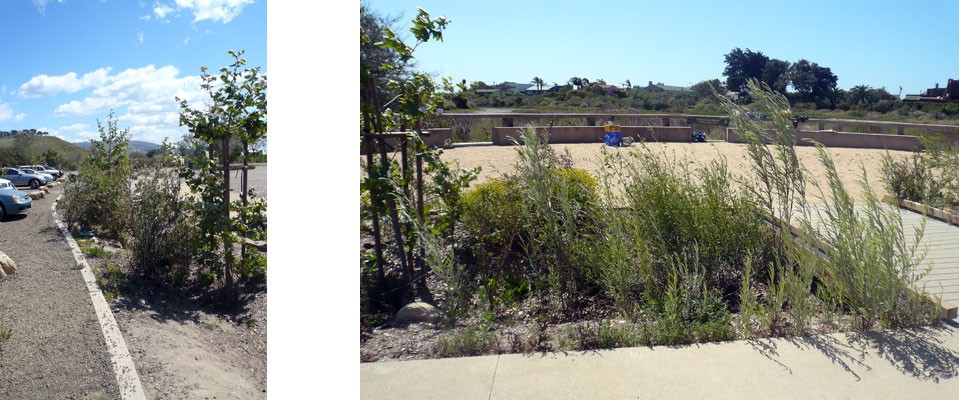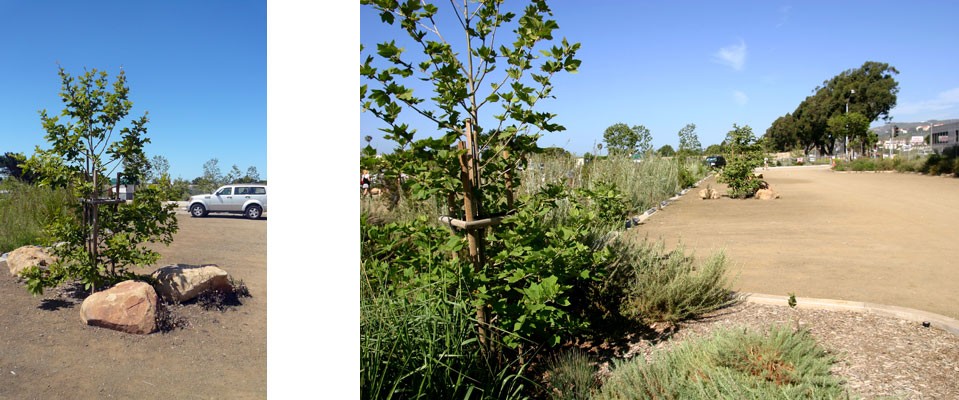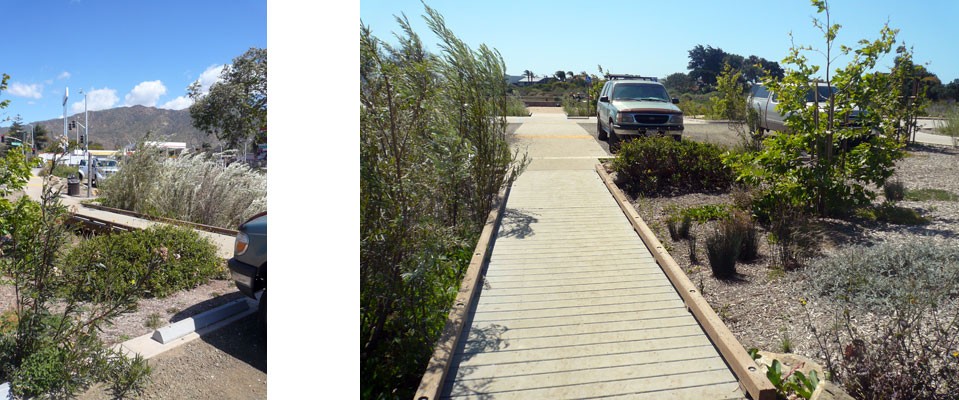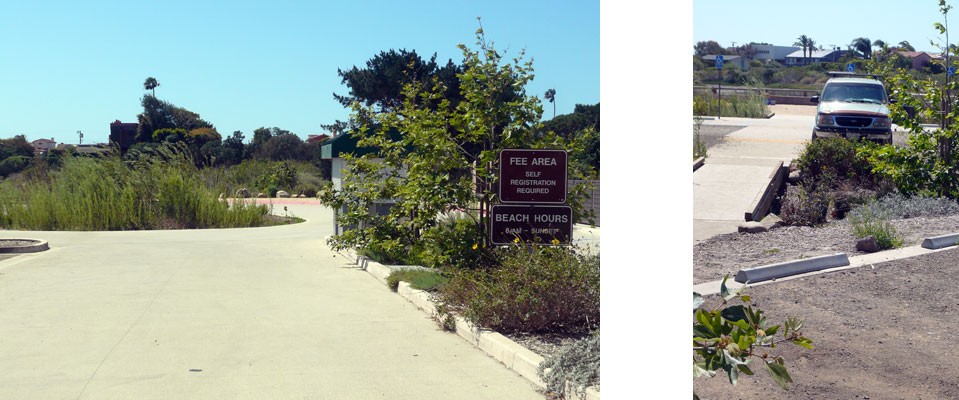MALIBU LAGOON RESTORATION: PHASE 1
Malibu, CA 2007
State Coastal Conservancy
Converting a polluting, asphalt parking lot into a native plant habitat that cleans water
Duvivier’s schematic design is part of a multi-phased restoration that increased wetland capacity. Phase 1 of the restoration was the creation of a park entrance that serves as a parking lot, learning center, waiting area, shower area and BMP for treatment of polluted runoff to protect the lagoon and famous Surfrider Beach, visited by 1.5 million people yearly. Runoff from the Pacific Coast Highway and adjacent parking lot is treated through the use of vegetated swales, retention basins, native riparian trees and permeable shale. Swales allow pollutants to be filtered through the soil before draining into the Lagoon. The vegetation and the soil help to digest pollutants. The learning station accommodates school children who have the opportunity to view the local fauna up close. The table tops and the benches have imprints of sea kelp, birds and sycamore leaves.
The project successfully eliminates discharges in lagoon up to a 5 year storm event in a 24 hour period to reduce non-point source pollution (more than 5 times the County requirement.) The Malibu Lagoon project has been used by California State Parks as a model for the redevelopment of state park facilities in other location in California.
As an additional measure of success, an International Group of Fellows from South Africa, Ghana, Brazil, Mexico and New Zealand as part of the GOOD Exchange Global Citizenship Project, funded by Bill & Melinda Gates Foundation toured the site to examine ideas and find solutions for their own countries. The above images show the swales during construction and 1 year later.
—————————————————————————————————————————————————–
“Duvivier’s design converted a polluting, heat-generating asphalt parking lot into a native plant habitat that cleans water in native-vegetated swales, and provides beautiful and educational spaces for people to enjoy. The parking lot set a high standard for the subsequent design elements. The completed project is now an urban park that combines natural ecosystem functions with high use by the public. The parking lot is an example and a template for other publicly-owned facilities including parks, schools and government buildings.”
— Shelley Luce, Executive Director of the Santa Monica Bay Restoration Commission (SMBRC)
—————————————————————————————————————————————————–


